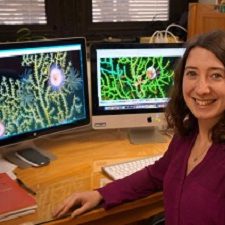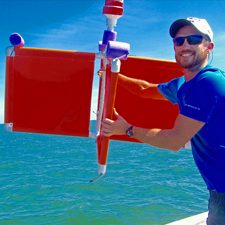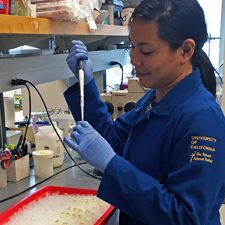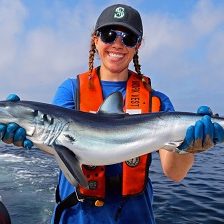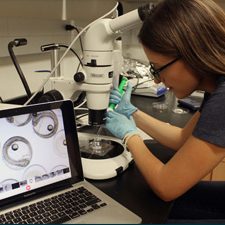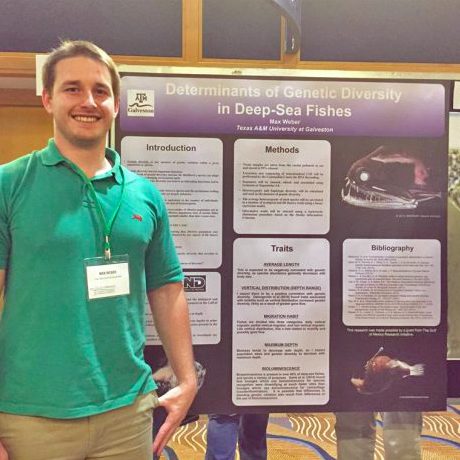The GoMRI Scholars Program recognizes outstanding graduate students and the vital research they contribute to improve understanding about the damage, response, and recovery following the Deepwater Horizon oil spill. The Scholars Program honors and builds community for these next generation of ocean science professionals.
These students serve as essential team members for much of the research underway and bring creativity, curiosity, and energy to the GoMRI scientific program. They represent the successful manifestation of the second GoMRI Legacy Goals, building scientific and intellectual capacity for response and mitigation strategies for future oil spill events.
Candidates for this program must be graduate students who have participated in a GoMRI-funded project for at least one year, whose work is primarily funded by GoMRI, and who are working on a dissertation or thesis based on GoMRI-funded science. On a semi-annual basis, the lead Principal Investigators of GoMRI-funded projects nominate students who meet these criteria.
Following confirmation, each scholar will receive a letter of congratulations declaring the title GoMRI Scholar along with a certificate from Dr. Rita Colwell, GoMRI Research Board Chair. GoMRI will collect information about these scholars and their careers and accomplishments for longitudinal studies and program impacts.
Below are GoMRI Scholars Highlight Stories that have been featured on the web site. For a complete list of scholars, click on the ‘People’ tab for any funded projects to view the list of GoMRI Scholars with affiliation for that project.
Deep-sea corals are important organisms that support a healthy and diverse deep-sea ecosystem. However, there is much we do not know about certain coral species, including how they grow, reproduce, or interact with other organisms.
When Deepwater Horizon oil approached coastal environments, it was unclear how river water entering the Gulf of Mexico would affect the oil’s transport and fate. Steve Dykstra uses drifters and ship-deployed sensors to study how freshwater plumes disperse in the coastal environment over different seafloor topography.
Polycyclic aromatic hydrocarbons (PAHs) can disrupt important signaling pathways that transcribe genes during fish’s early embryonic development, which could cause malformations.
Oil droplets can attach to tiny sediment particles suspended in the water column, causing them to sink to the seafloor where they can linger for a long time. Sediment grain size influences if and how oil droplets are resuspended into the water column.
When oil from the Deepwater Horizon spill began approaching land, one proposed response was to divert Mississippi River water and sediment into the marshes to try and push surface oil more towards the Louisiana-Texas shelf. Linlin Cui is investigating the impacts of Mississippi River diversions on Barataria Bay hydrodynamics to help inform how future oil spill responders plan and execute freshwater diversions.
Major environmental disturbances such as oil spills can alter a marine ecosystem’s structure and even cause species losses or additions in impacted areas – changes which may have long-term consequences for an ecosystem’s functions.
Studies that investigate the effects of oil exposure on developing fish are typically conducted at otherwise non-stressful ambient conditions, which may result in conservative impact estimates. Christina Pasparakis is studying the combined effects of oil exposure and other environmental stressors to create a more comprehensive assessment of Deepwater Horizon impacts.
Natural and manmade disasters often involve long-term effects, but the majority of follow-up research tends to focus on the biophysical impacts rather than the social. Jacqueline Fiore, a Louisiana resident, understands how disasters such as hurricanes and oil spills can impact local industries, citizens, and ecosystems.
There are hundreds of deep-pelagic fish species in the Gulf of Mexico, but we know very little about their taxonomy, diversity, and population sizes. Max Weber plans to catch fifteen individual specimens of each of the 500 known deep-sea Gulf fish species to help us better understand these organisms and how the Deepwater Horizon oil spill may have impacted them and environment.
Those who have ever photographed the ocean on a sunny day have likely noticed how the reflected sunlight made the water gleam, often distorting the image. Shaojie Sun has quantified this phenomenon, called “sun glint,” to help address a longstanding limitation in scientists’ ability to assess oil seeps and spills using satellite imagery.

